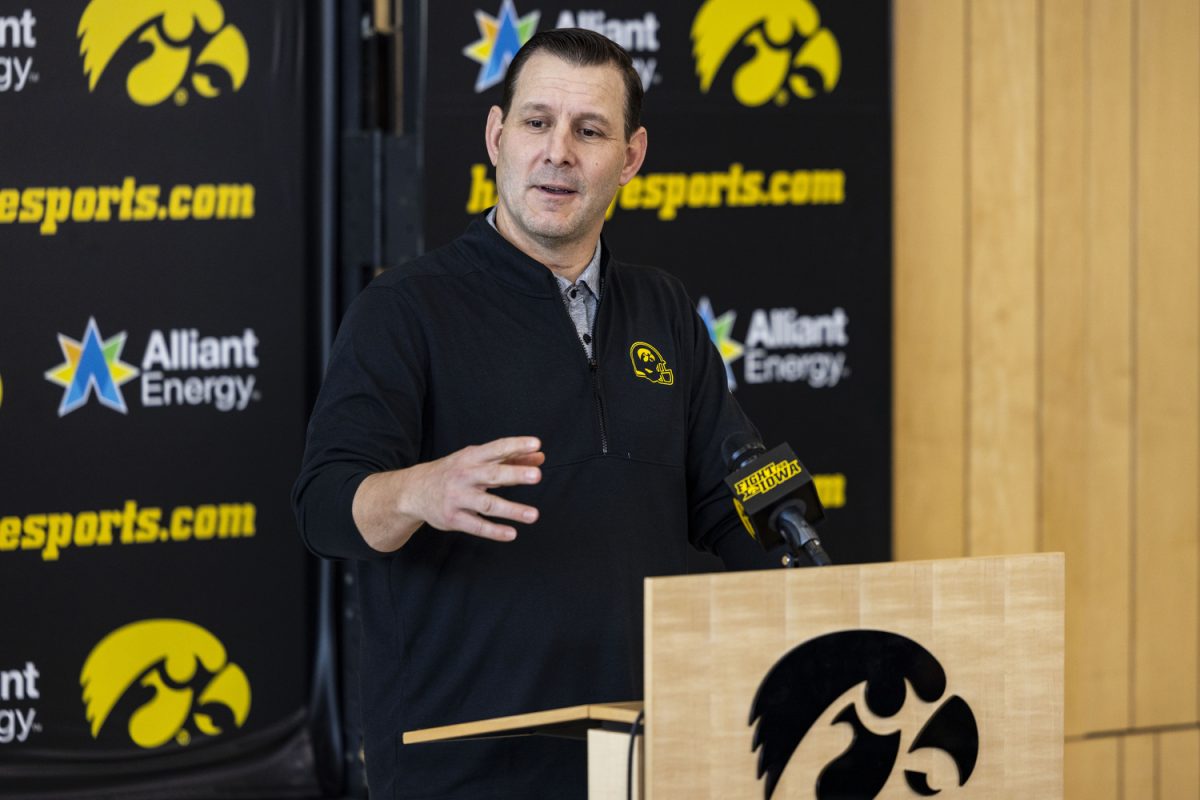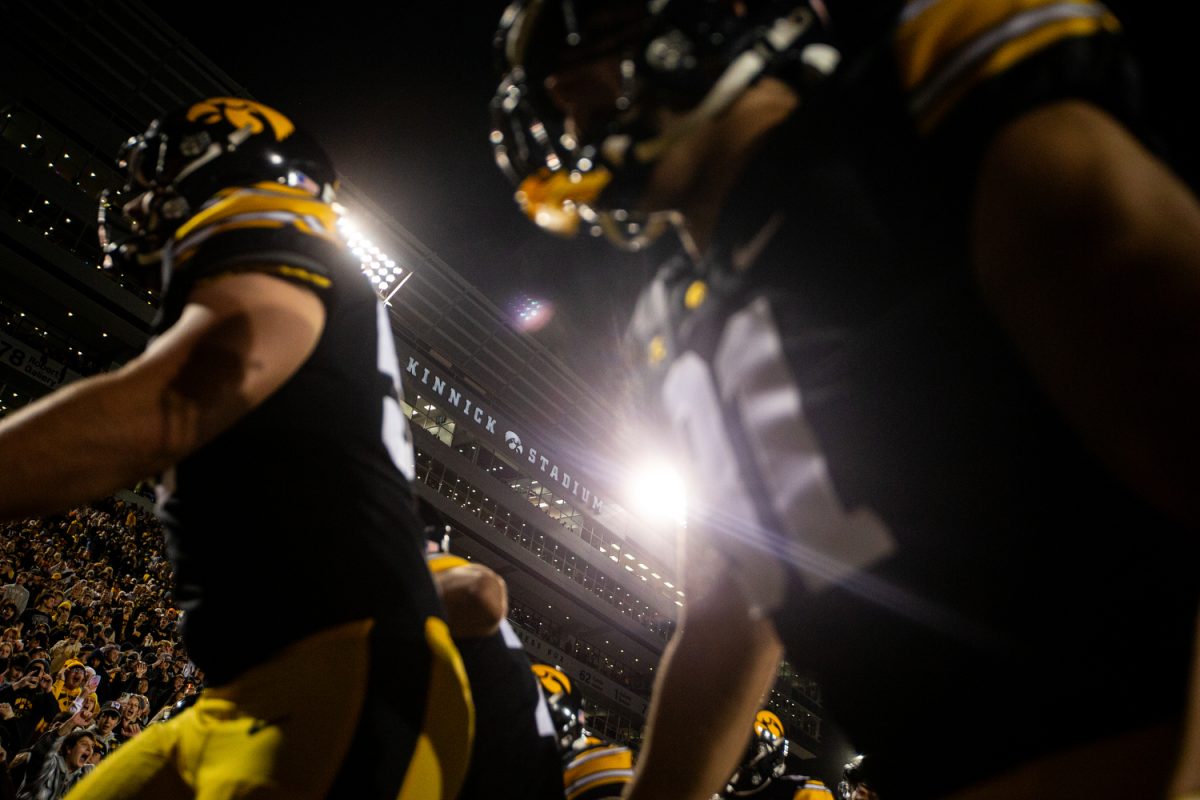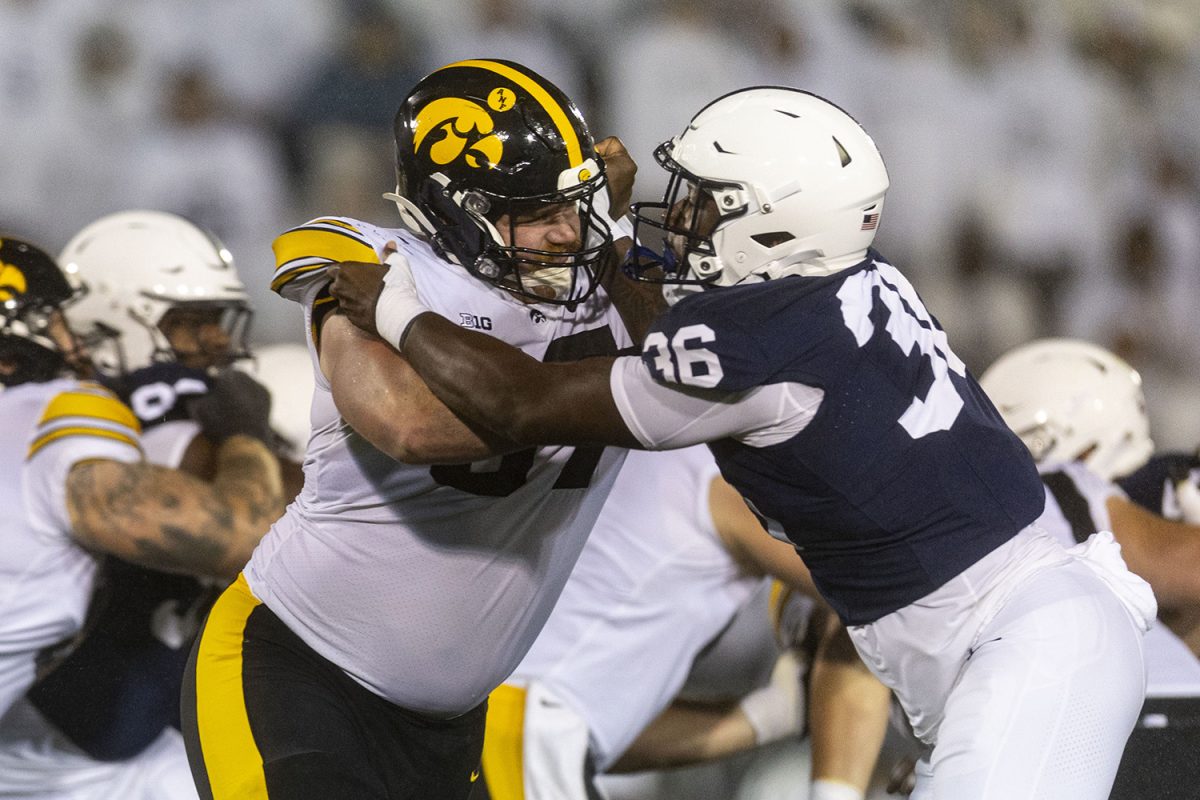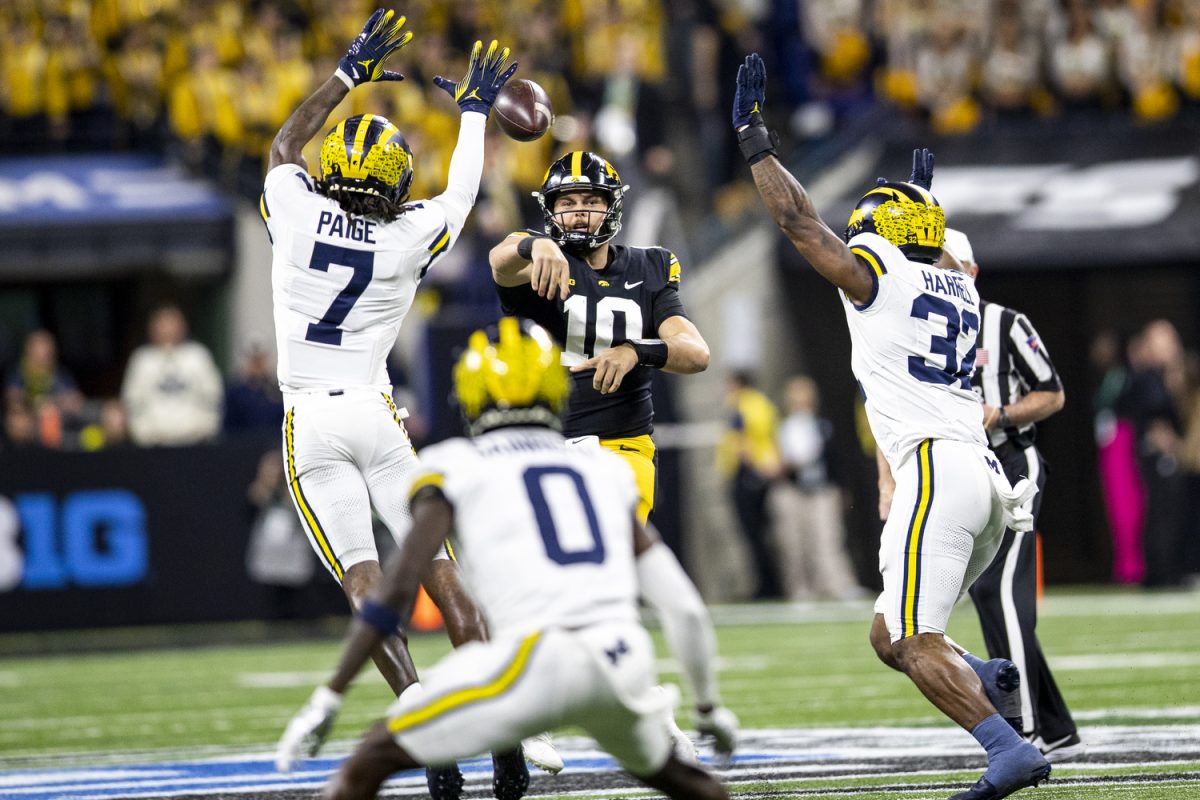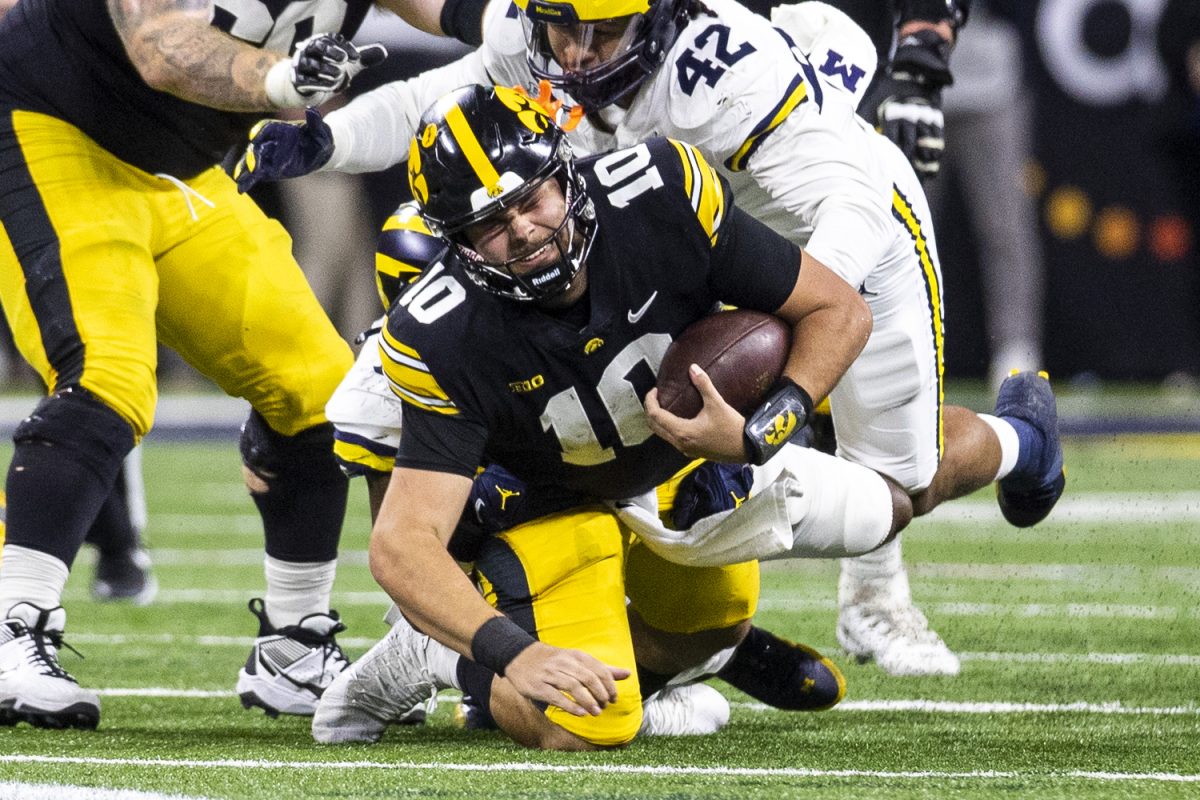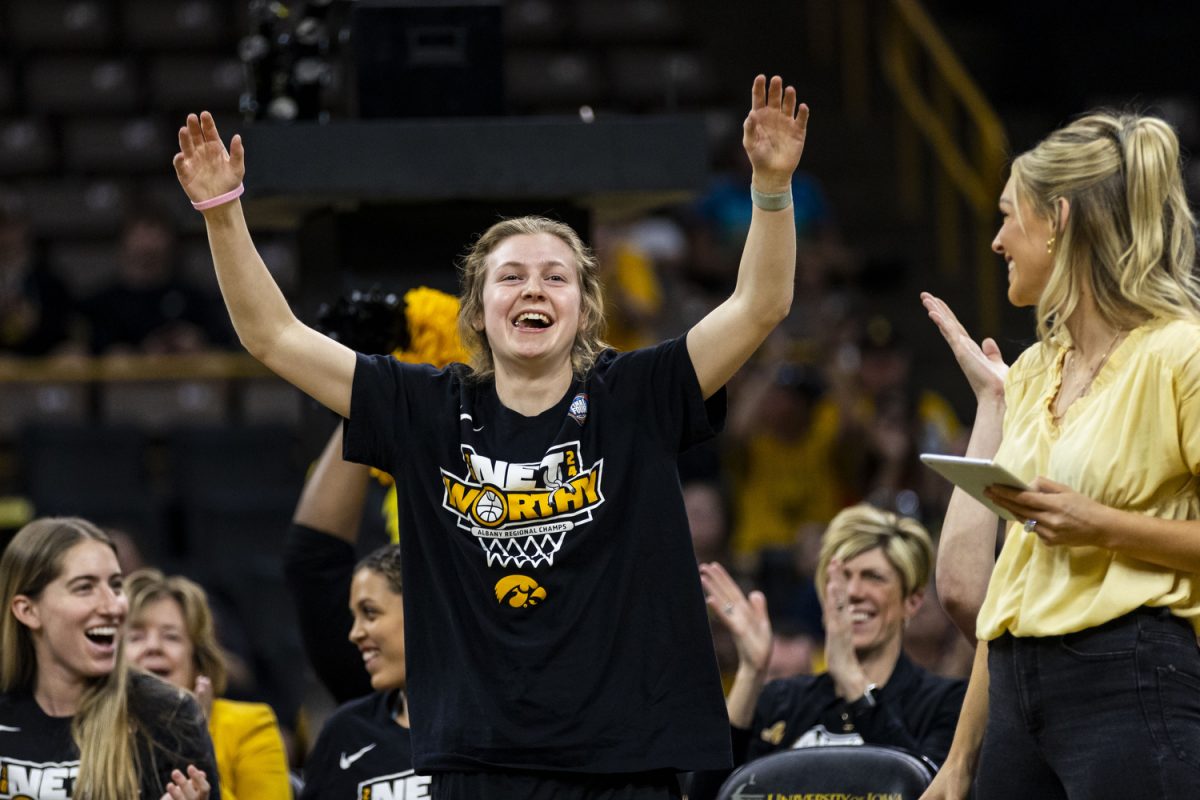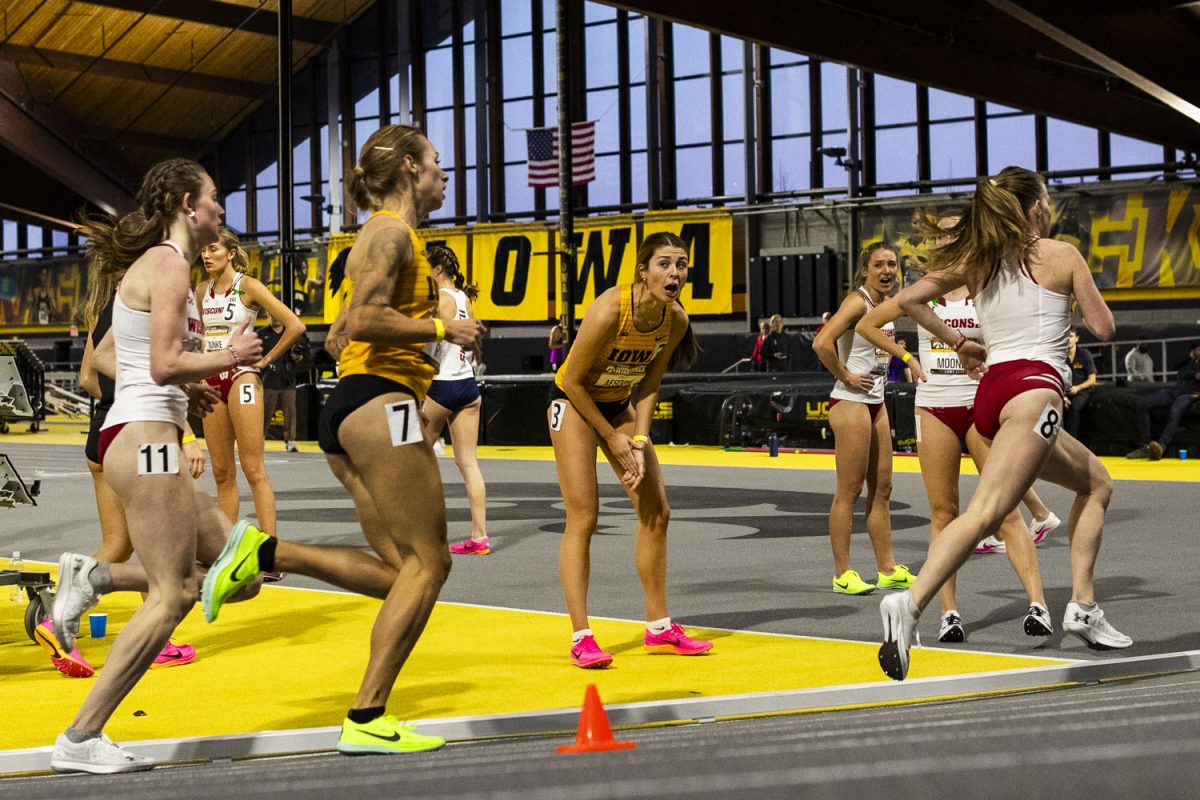After winning the Joe Moore Award at the end of the 2016 season, there was excitement around Iowa’s offensive line.
Cole Croston was the only person who had started any games up front not coming back to the team, meaning the Hawkeyes would get returners Ike Boettger, Boone Myers, James Daniels, and Sean Welsh, who all started at least 11 games in 2016.
Unfortunately for Iowa, injuries have ravaged the big guys up front, sidelining Boettger and Myers. Both seniors are most likely sidelined for the rest of the season.
This has left a large hole in the once-veteran offensive line. Maybe the better way to describe it is: There hasn’t been a hole left open, and the rushing attack has had a difficult time under the newbies’ work.
Without Boettger and Myers, the offensive-line spots have been moved around and filled with the likes of Keegan Render, Alaric Jackson, and Tristan Wirfs. Before 2017, Render was the only of the group to see game time.
The depth Iowa had hoped to see from the offensive line in 2017 just isn’t there, and the coaching staff knows it.
“We’re not as deep as we thought we’d be or hoped to be,” Iowa head coach Kirk Ferentz said in early October, after Myers’ last game. “We’re going through a little bit of a shuffle, if you will. But we’ll keep pushing. We’ve got enough there, and we’ve got the right guys and all that type of thing, so it’s just a matter of pushing forward, and we’re open to anything right now to help the team in any phase. We’re looking at every possibility.”
Although the offense and coaches have continually said the younger, more inexperienced players are filling in just fine, that is not what the numbers show. There has been a large disparity between the running game this year compared with last.
Last year, the combination of Akrum Wadley and LeShun Daniels (with some help from a few others) averaged 171.8 yards a game on the ground. This season, that number has dropped more than 40 yards, down to 130.8 on just two fewer rush attempts per game.
Rushing yards per game drops to just 124 during the games Boettger has missed, when the senior went down against Iowa State on Sept. 9 with a season-ending Achilles injury. In the three games Myers has missed, the Hawks averaged 135 yards on the ground. He recently had surgery on the ankle he has had constant issues with throughout the season, and there is no timetable for his return.
That leaves first-year offensive-line coach Tim Polasek with less depth than he had originally hoped when he first entered the Iowa program earlier this year.
During spring camp, Polasek said there would be shuffling on the line, but that was more so because there was an abundance of talent that could play — he said there were six or seven guys who had the ability to play a lot of snaps, and in order to get the best possible frontline, it would require some movement.
“We’re moving some guys around a little bit just to get them some reps with some what-if situations. But honestly, matchups and injury dictate how guys are going to flow,” Polasek said in April. “There are several guys. There are probably five or six guys who are fighting.”
Good thing the Hawkeyes were preparing for those injuries to come up, because the team has definitely had to do some adjusting.
There have been times when the line is shuffled up, but those on the line say it isn’t that big of a modification in the way they play. James Daniels, though he has been pretty much set at center, said the largest difference is simply the way the players set their hands on the line of scrimmage.
“When we practice, we’ll practice multiple positions,” he said. “If you’re a left-handed player, your left hand’s down, if you’re a right-handed player, your right hand’s down. That’s probably the biggest adjustment.”
Though it is young and has been the subject of some criticism, one thing the offensive line has done a good job in is protecting the quarterback, Nate Stanley.
He has been sacked just 11 times this year, with the Hawkeyes tying for No. 23 in the NCAA in sacks allowed with 1.38 per game. That also ties the Hawkeyes for fourth in the conference and is an improvement over last year, when Iowa gave up 2.3 sacks a game.
When it comes to the running game, though, Iowa has had a lingering relationship with using fullbacks as blockers. Both Drake Kulick and Brady Ross saw action in nearly every game last season, trucking ahead of Wadley or Daniels to open up space for the running backs.
Interestingly enough, Kulick and Ross have each played in just five games this season, eliminating the extra block.
If anyone is a fan of the fullback position, it is Wadley. He says the extra shields are of a different breed.
“I love them, Drake and Brady. They’re a different type of guys,” Wadley said. “Drake Kulick, he doesn’t care, Brady Ross, they go balls out, every day. They will hurt themselves just for the cause. You need guys like that on your team … I have no doubt in my mind, if they have to do something, they’re going to do it.”
This was a fact last year, when Kulick was carted off the field after the first play of the game in Lincoln, Nebraska. A junior at the time, Kulick broke his leg in a pileup, blocking for his running back.
Though the fullbacks’ snap counts have been down this season from what they have been in the past, Kulick and Ross know that it is all part of the game plan. Considering the number of times Iowa has been stuck in third and long, it is understandable that a fullback isn’t exactly necessary at that time.
“You’re limited as to what you can do as a fullback; I don’t think anyone would disagree,” Ross said. “The fullback probably shouldn’t be in the game on third and 10 or third and 12. There are limited things that we can do.”
Even with the absence of Boettger and Myers, Iowa does still have options for the offensive line. The depth may not be the six or seven players that Ferentz and Polasek had hoped during the spring, but there are a couple of guys in Ross Reynolds and Levi Paulsen who have seen game time and can fill in if need be.
The main thing for those guys stepping up — particularly the young ones such as Wirfs and Jackson — is working on consistency. Though they have proven to be tough players, they have to do so time and time again, not just once in a while.
“That first season, typically, is pretty tough. It’s a learning experience,” Ferentz said. “But the challenge, play after play, is being consistent and doing things really well. That’s a tough position to be good at … They’re both capable. They’ve shown that in practice against good players.





